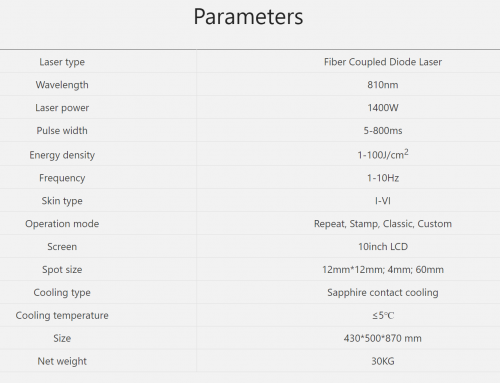Does IPL or diode technology work better for laser hair removal?
With so many methods available for hair removal, it can be challenging to understand each treatment’s differences, downfalls, and advantages. Laser hair removal is one of the largest markets in aesthetics worldwide. Laser and light-based devices can reduce and prevent future growth, but the efficacy can vary significantly depending on the technology utilized. This article will explore different light-based hair removal methods and help you determine the best option for your practice.
First, it’s beneficial to understand some terminology. Laser hair removal functions by using the physical properties of light to target hair. One can argue that “laser hair removal” is an industry term coined for marketing purposes. According to the FDA, laser treatment methods produce “permanent hair reduction” instead of outright permanent removal. This distinction is due to how these lasers work. Essentially, lasers target hair shafts in the anagen phase of cyclical hair growth, or when a hair is actively growing. When the laser applies energy to the hair shaft, the energy causes thermal damage to the underlying follicle and papilla, reducing its ability to produce hair in the future. Hair may grow less frequently, less densely, and the hair shaft created by the follicle may be thinner or even lighter in complexion. These aspects are what chalk up laser hair removal to more accurately be referred to as permanent hair reduction.
When discussing the specific technologies for this procedure, we can survey two fundamental types: intense pulsed light (IPL) and laser-based methods. While hair removal lasers typically use a single wavelength (and occasionally a second wavelength as seen in the Laser), IPL treatments instead release a broad-spectrum or band of light energies. Visible spectrum light is approximately 400-700nm, and infrared is 700-1400nm. IPL devices generally emit indiscriminate light energy from 400-1200nm, and most will have additional filters that can constrain the light energy slightly more than those parameters. Shorter wavelengths (400-550nm) can treat red and fair hair colors more effectively, while longer wavelengths (550nm+) target darker skin and hair tones.
Users have always recognized broad-spectrum IPL treatments as being versatile due to these filters, depending on the procedure. This same versatility, however, is why IPL treatments generally fall short. IPL treatments have a significantly larger impact on the skin due to exceptional hemoglobin and melanin absorption. IPL lasers may prove effective on fairer hair types, but as a consequence, are either ineffective or unsafe to use when treating darker skin types (i.e., Fitzpatrick Type III-VI). Practitioners should never recommend IPL treatments for melanin-rich patients. Thus, these devices are far less accommodating than their diode counterparts.
Utilizing an actual laser, such as an 810nm diode, practitioners can safely treat all skin types and hair colors. This has FDA clearance for use on all skin types, Fitzpatrick I-VI, and has preset parameters and protocols loaded in the system to allow for safe, effective, and easily delegable treatments. The specific diode emits 810nm as its primary action and secondarily emits 940nm, each wavelength targeting a different aspect of the follicle to prevent future growth.
First, the primary wavelength of 810nm targets the chromophore melanin, highly concentrated in the hair shaft. The light energy then travels down the hair shaft to the follicle and underlying papilla with minimal impact on the surrounding skin tissue. The heat distribution and follicle’s absorption is further confined by a specifically catered and programmed pulse format. The second wavelength, 940nm, is what sets the laser apart from other hair removal lasers. 940nm utilizes a smaller, reduced peak absorption in the chromophore hemoglobin. Hemoglobin is found in the papilla, a large bulb at the base of the hair follicle that contains the blood supply and essential nutrients for hair growth. It allows an additional thermal reaction in that deep vessel, thus preventing future growth through a different action than 810nm. Practitioners can request a separate 940nm handpiece to specialize in vascular treatments such as targeting telangiectasia, hemangioma, or other vascular conditions.
Although different methods offer varying benefits and advantages, diode laser hair removal is the proven method for the safest, fastest, and most effective hair removal for patients of any skin tone/hair color combination. Diode lasers like the Laser continue to outpace other hair removal methods like IPL, Electrology, Alexandrite, and other systems in terms of treatment speed and safe application for all skin types.



Leave A Comment